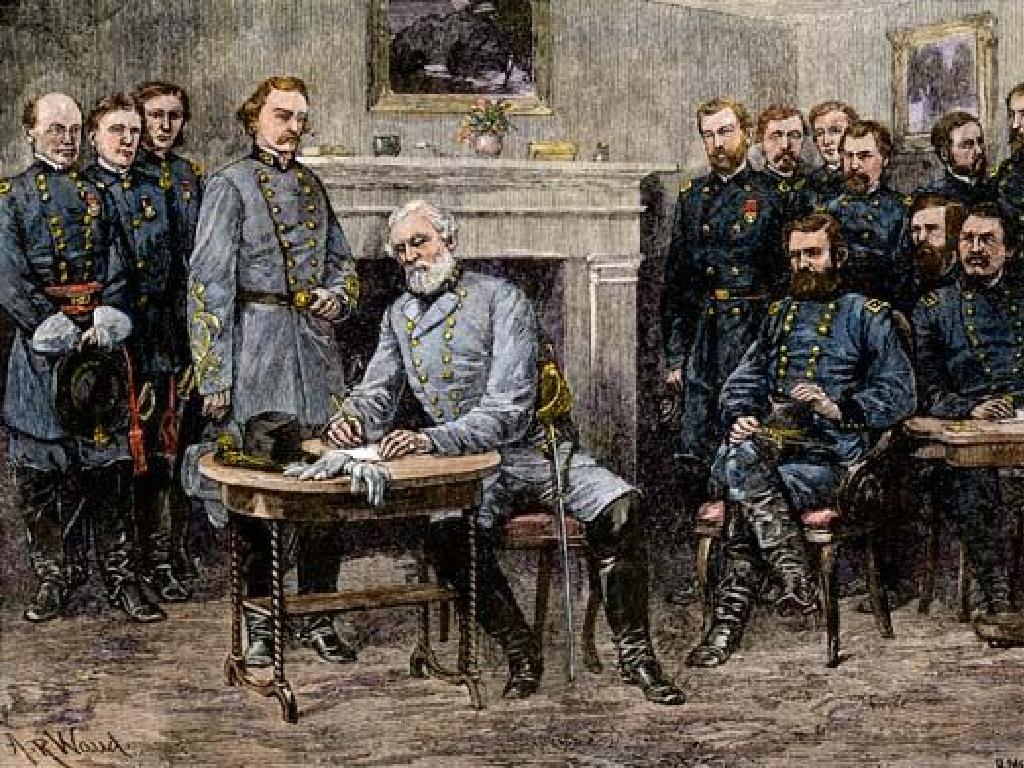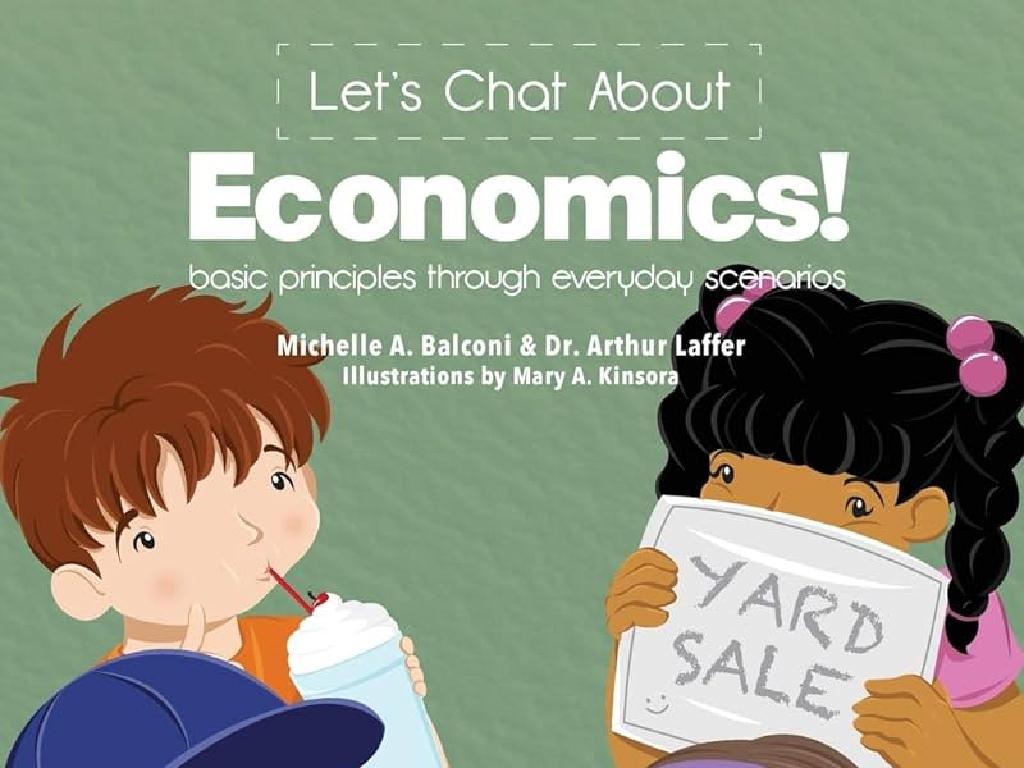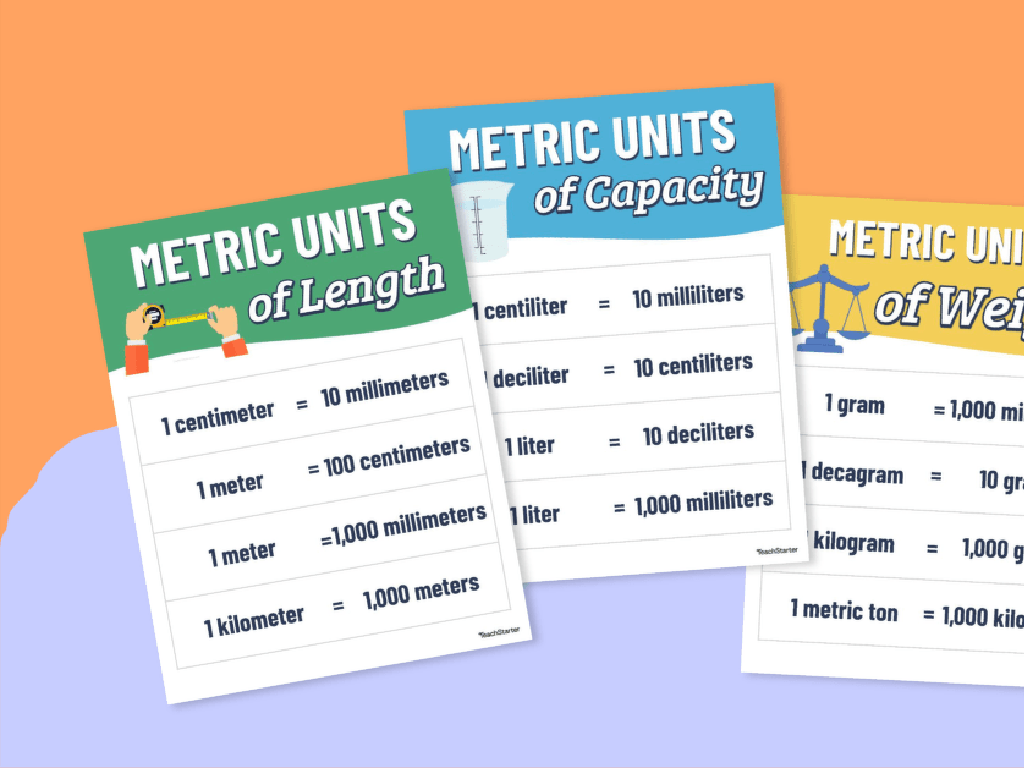Addition Word Problems - Up To Two Digits
Subject: Math
Grade: Second grade
Topic: Addition: Two Digits
Please LOG IN to download the presentation. Access is available to registered users only.
View More Content
Welcome to Addition!
– Becoming addition experts today
– Addition’s role in daily life
– Adding numbers is useful for tasks like counting money or combining scores.
– Solving two-digit word problems
– Learn to add numbers like 23 + 15 through stories and problems.
– Practice with fun examples
– We’ll use toys and snacks to make learning addition exciting!
|
This slide introduces the concept of addition to second graders, emphasizing its importance and applicability in everyday situations. Start by engaging the students with the idea that they will become ‘addition experts’ by the end of the lesson. Highlight how addition is used in real-life scenarios, such as adding up money or scores. Explain that they will learn to solve word problems that involve adding two-digit numbers, which is a foundational skill in math. Provide examples and practice problems that are relatable and fun, such as using toys or snacks to visualize the addition process. Encourage participation and ensure that each student understands the concept before moving on to more complex problems.
Understanding Addition
– Addition combines numbers
– Like putting together toy blocks to see how many you have
– The total increases
– ‘Addends’ are numbers we add
– Addends: if you have 3 apples and get 2 more, 3 and 2 are addends
– ‘Sum’ is the total
– Sum: 3 apples + 2 apples = 5 apples in total
|
This slide introduces the basic concept of addition to second-grade students. Start by explaining that addition is like combining things together, such as adding more blocks to a pile of blocks. Emphasize that when we add, the amount we have grows. Introduce the terms ‘addends’ and ‘sum’ with simple examples, like combining apples, to make these terms relatable and understandable. Use real-life scenarios or classroom objects for demonstration. Encourage the students to think of their own examples of adding things together in their daily lives.
Solving Addition Word Problems
– Word problems are number stories
– Read carefully to find numbers to add
– Look for clues: ‘in all’, ‘together’, ‘total’
– Practice with an example problem
– If Tim has 3 apples and gets 5 more, how many in all?
|
This slide introduces students to the concept of addition word problems. Emphasize the importance of reading the problem carefully to understand what is being asked. Explain that certain phrases like ‘in all’, ‘together’, and ‘total’ are key clues that signal addition. Use an example problem to illustrate how to identify the numbers that need to be added and how to find the solution. Encourage students to visualize the problem and use objects or drawings to help them understand the story. In the next class, provide a variety of word problems for students to practice reading for comprehension and solving for the sum.
Fun at the Park: Adding Balloons
– Count red balloons: 15
– Count blue balloons: 17
– How many in total?
– A question to find the sum of two groups.
– Let’s add them together!
– 15 red + 17 blue = 32 balloons
|
This slide introduces a practical addition word problem involving counting balloons of different colors. Start by asking the students to visualize the park with red and blue balloons. Then, guide them to count the red balloons and the blue balloons separately. The main question encourages them to think about the total number of balloons. Demonstrate on the board how to add the two numbers together. Encourage the students to use their fingers, drawings, or physical counters to add the numbers. After solving the problem together, ask the students to come up with similar addition problems involving items in their own environment to reinforce the concept.
Solving Addition Word Problems
– Write the numbers: 15 + 17
– Add ones place: 5 + 7 = 12
– Write the 2, carry over the 1
– Add tens place: 1 + 1 + 1
– 1 (carried) + 1 (from 15) + 1 (from 17) = 3
– Total sum: 32 balloons
– 32 is the total number of balloons
|
This slide guides students through the process of solving a two-digit addition word problem. Start by writing down the numbers from the problem, ensuring students understand the context (balloons in this case). Demonstrate adding the ones place first, explaining the concept of carrying over when the sum exceeds 9. Then, move to the tens place, including the carried over number in the addition. Conclude by combining the ones and tens to find the total sum. Encourage students to visualize the problem with actual balloons or other aids to enhance understanding. Practice with similar problems to reinforce the concept.
Try It Together: Adding Fruits
– Counting apples in the basket
– There are 23 apples to count.
– Counting oranges in the basket
– There are 34 oranges to count.
– Adding apples and oranges together
– Add 23 apples to 34 oranges.
– Finding the total number of fruits
– Add the two amounts to find the total.
|
This slide is an interactive class activity designed to help second-grade students practice addition with two-digit numbers through a relatable word problem. Start by asking the students to visualize the basket with apples and oranges. Then, guide them to count the apples and oranges separately, reinforcing the concept of counting by ones and tens. Next, demonstrate how to add the two quantities together using vertical addition, and encourage the students to participate by solving the problem on their own or in small groups. Finally, discuss the total number of fruits in the basket to ensure understanding. Provide additional similar problems for practice and offer praise as students grasp the concept.
Practice Time: Solving Addition Problems
– Try solving problems independently
– Identify key numbers and phrases
– Look for words like ‘total’, ‘together’, ‘sum’
– Work carefully and methodically
– Review your answers thoroughly
– Double-check your calculations
|
This slide is designed to encourage students to apply their addition skills to solve word problems involving two-digit numbers. Remind them to carefully read the problem and look for important numbers and words that indicate addition, such as ‘total’, ‘together’, or ‘sum’. Encourage them to take their time to understand the problem and to check their work after solving it. As a teacher, prepare to walk around the classroom to assist students who may need help and to ensure that they are on the right track. Provide positive feedback and guidance as needed. For the activity, consider having a mix of problems with different contexts, such as adding prices of items, combining scores in a game, or totaling distances traveled, to make the practice engaging and relatable.
Class Activity: Addition Scavenger Hunt
– Let’s go on an Addition Scavenger Hunt!
– Find objects in pairs around the classroom
– For example, 2 pencils + 3 pencils
– Write down your addition problems
– Use a paper to note 2 + 3 = ?
– Solve each problem you find
– Calculate the sum, like 2 + 3 = 5
|
This activity is designed to make learning addition fun by incorporating movement and exploration. Set up the classroom with various objects in pairs that students can find and add together. Encourage them to write down each addition equation they create and solve it. Provide assistance as needed and ensure that each student is engaged and participating. As an extension, students can draw the objects they find and write the addition sentence below the drawing. Possible variations of the activity could include grouping students in teams, timing the scavenger hunt for added excitement, or having students present their findings to the class.
Great Work on Addition Word Problems!
– Congratulations on learning addition!
– Practice at home to become a math star
– Try more problems to get even better
– Up next: Subtraction word problems
– We’ll explore taking numbers away next
– Keep up the fantastic effort!
|
This slide is meant to congratulate the students on their hard work and encourage them to continue practicing their new skills at home. Emphasize the importance of practice in mastering addition word problems. Give them a heads-up that the next lesson will be about subtraction word problems, which is another exciting step in their math journey. Encourage them to keep up the great effort and remind them that learning math is like building blocks, each new skill supports the next. Provide some example problems for home practice and encourage students to try creating their own word problems to solve.

/mla_works_cited_format.png)



